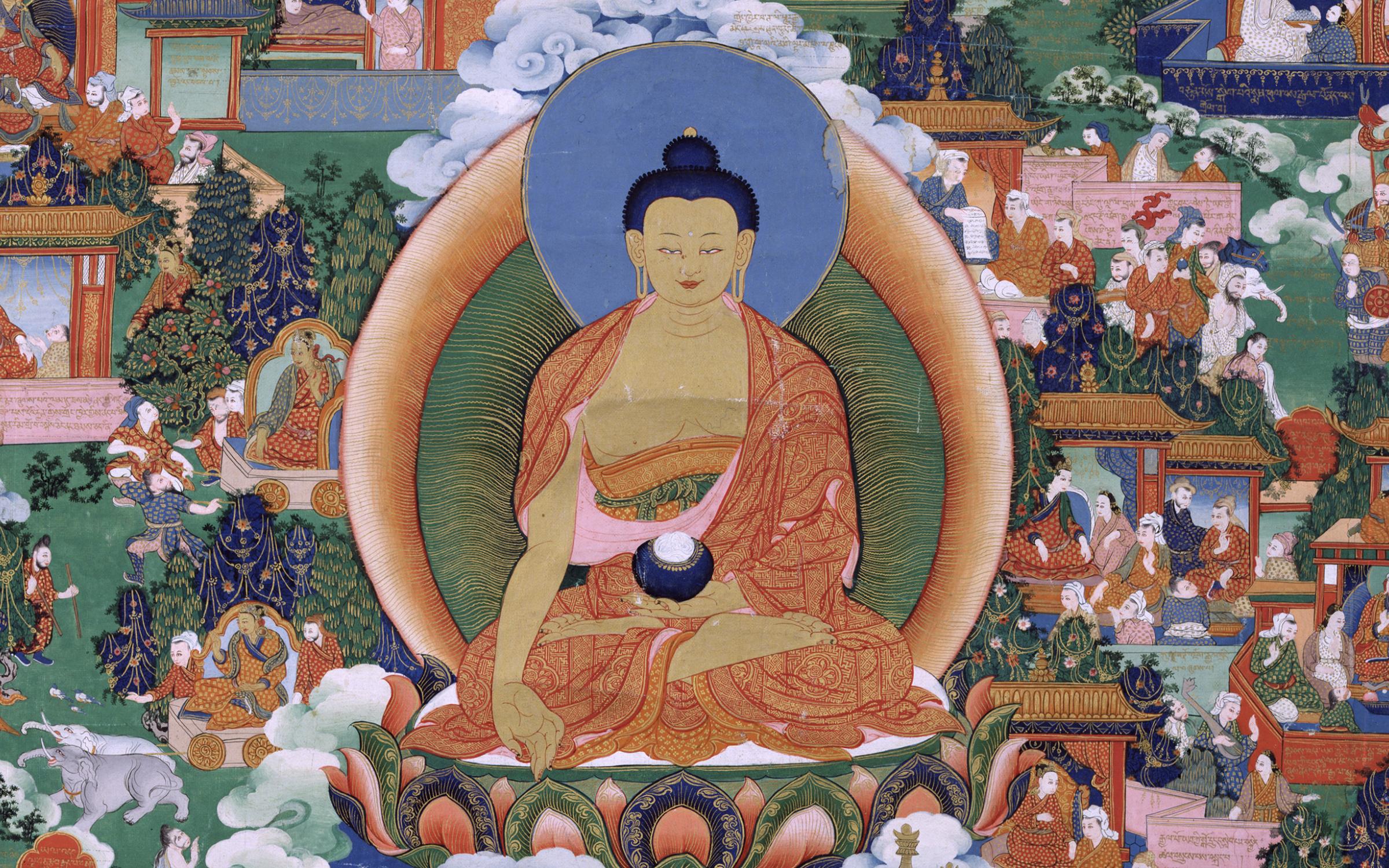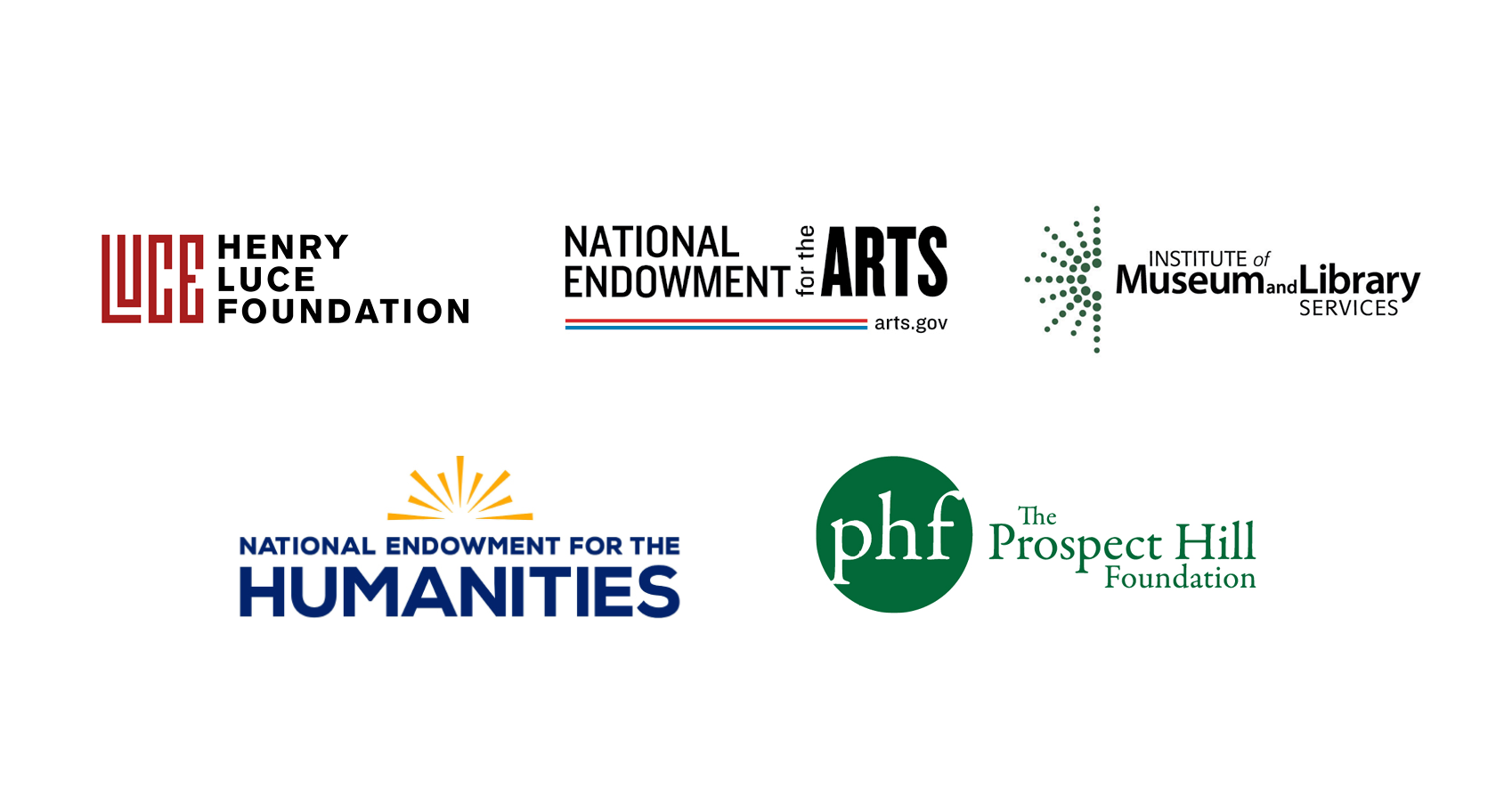
Gateway to Himalayan Art introduces the main forms, concepts, meanings, and religious traditions of Himalayan art with objects from the collection of the Rubin Museum of Himalayan Art, New York. A large multimedia map at the start of the exhibition orients viewers to the greater Himalayan region, which encompasses Indian, Nepalese, Bhutanese, and Tibetan cultures as well as interrelated Mongolian and Chinese traditions. This exhibition invites exploration of these diverse cultural spheres through exemplary objects presented in three thematic sections: Symbols and Meanings, Materials and Technologies, and Living Practices. It also includes voices from Himalayan artists and contemporaries, along with connections to related digital content to learn more.
The exhibition features sculptures, Tibetan scroll paintings (thangkas), ritual implements, medical instruments, and instructional paintings, as well as a stupa and prayer wheel. The commissioning, creation, and use of such objects are tied to the accumulation of merit, religious advancement, and hopes for wealth, long life, and well-being. Special installations include displays detailing the process of Nepalese lost-wax metal casting and the stages of creating a thangka. A Tibetan shrine cabinet presents how these objects would be displayed in a traditional household shrine.
This traveling exhibition is organized and provided by the Rubin Museum of Himalayan Art and curated by Senior Curator of Himalayan Art Elena Pakhoutova. Gateway to Himalayan Art is an integral component of the Rubin Museum’s Project Himalayan Art, a three-part initiative that also includes the publication Himalayan Art in 108 Objects and a digital platform. Together they provide introductory resources for learning about and teaching Himalayan art.
Be the first to see Gateway to Himalayan Art and support the UMFA’s work at a Preview Party on Friday, February 14, 2025.
Join us in an eventful Community Celebration for this exhibition on Saturday, February 15, 2025.
- Gateway to Himalayan Art: Looking Guide - English
- Gateway to Himalayan Art: Guía para mirar - Español
Want to learn more about Himalayan art and the insights illuminated by it? Subscribe to the Rubin Museum of Himalayan Art newsletter to explore Himalayan art, hear from diverse perspectives, and contemplate big questions at the center of our shared human experience. Plus, stay connected to the Rubin’s work around the world, including traveling exhibitions, participatory experiences, grants for artists and scholars, educational and research initiatives, and much more.
This exhibition is organized and provided by the Rubin Museum of Himalayan Art.

Presenting Sponsor:
Virginia Barlage
Curatorial Sponsor:
George S. and Dolores Doré Eccles Foundation
Installation Sponsor:
Stephanie and Tim Harpst & The Tozer Endowment for Special Exhibitions
Programming Sponsor:
Thomas and Mary S. McCarthey
Community Partner:
Utah Tibetan Association
Leadership support for Project Himalayan Art is provided by the Henry Luce Foundation.
Project Himalayan Art has been made possible in part by a major grant from the National Endowment for the Humanities: Democracy demands wisdom.
This project was made possible in part by the Institute of Museum and Library Services MA-253379-OMS-23.
This project is supported in part by the National Endowment for the Arts.
Lead support is provided by the Ellen Bayard Weedon Foundation, Bob and Lois Baylis, Barbara Bowman, the E. Rhodes & Leona B. Carpenter Foundation, Noah P. Dorsky, Fred Eychaner, Christopher J. Fussner, the Estate of Lisina M. Hoch, Matt and Ann Nimetz, The Randleigh Foundation Trust, Shelley and Donald Rubin, and Jesse Smith and Annice Kenan.
Major support is provided by Daphne Hoch Cunningham and John Cunningham, Stephen and Sharon Davies, the Edward & Elizabeth Gardner Foundation, Mimi Gardner Gates, Hongwei Li, Max Meehan, the Monimos Foundation, Edward O’Neill, The Prospect Hill Foundation, Sarah and Craig Richardson, Rossi & Rossi, Basha Frost Rubin and Scott Grinsell, the Andrew Sabin Family Foundation, Namita and Arun Saraf, Eric and Alexandra Schoenberg, Eileen Caulfield Schwab, UOVO, and Sandy Song Yan, and the Zhiguan Museum of Art.
Special Support is provided by:
Dr. Bibhakar Sunder Shakya, to honor the memory and legacy of Professor Dina Bangdel, art historian, curator, cultural activist, and educator from Nepal.
Samphe and Tenzin Lhalungpa, to honor the memory and works of L.P. Lhalungpa, Tibetan scholar, broadcaster, and educator.

